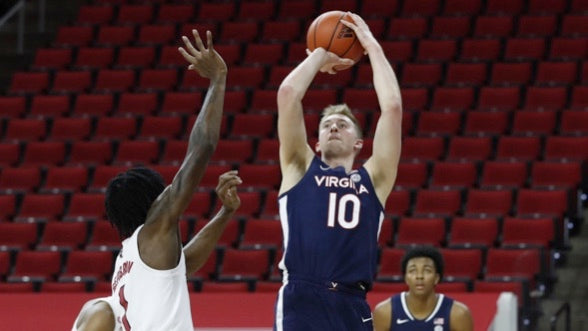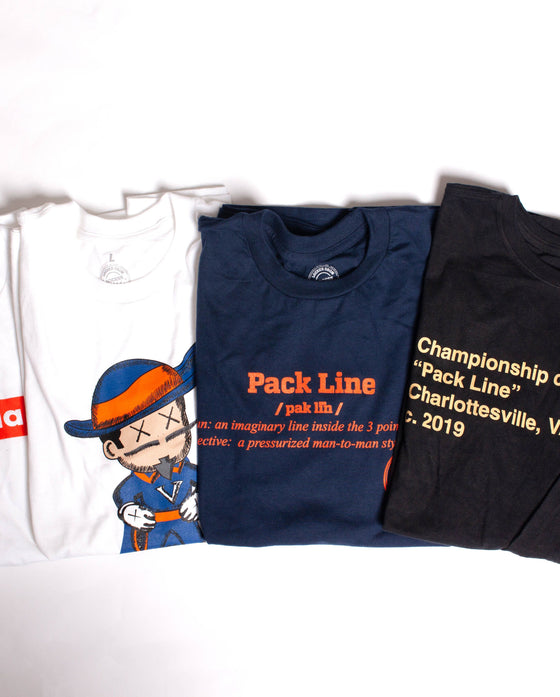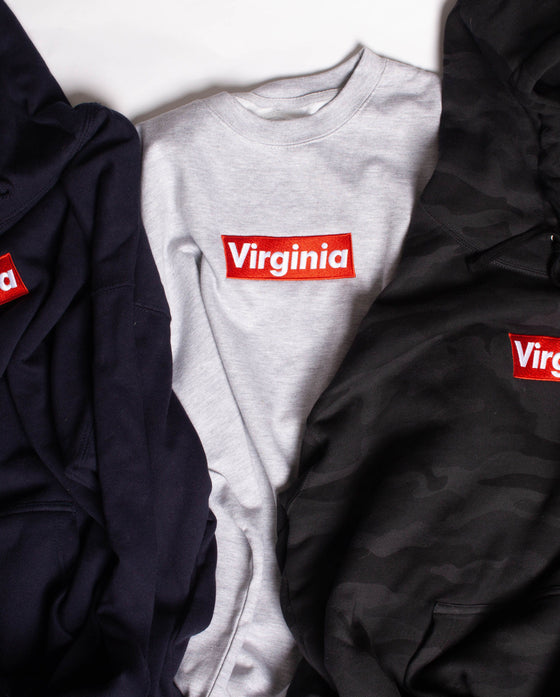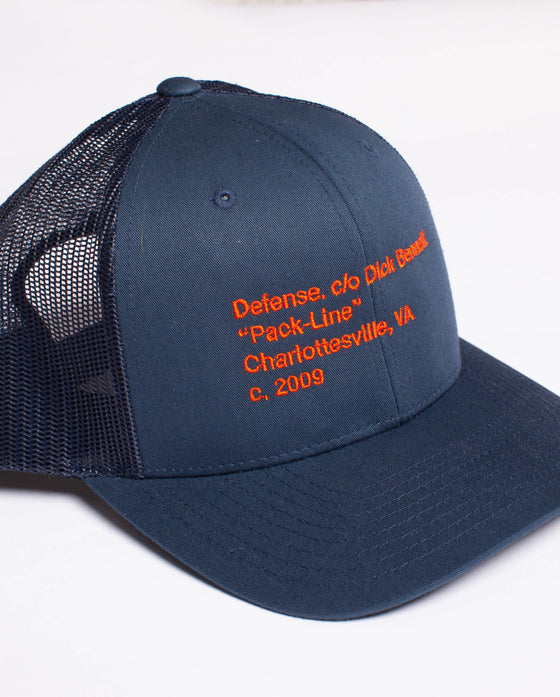Why and How UVA Should Buck the Trend and Win From the Midrange

On Saturday against Louisville UVA emphasized attacking from the midrange like they haven’t all season. In many ways the ‘Hoos won the game in the midrange as Sam Hauser and Trey Murphy combined to score 20 points on long two-pointers.
While the ‘Hoos have been shooting fewer and fewer midrange jumpers over the years, an increase in volume of long-twos might just be a solution for the issues this team has experienced especially against opponents who switch one through five.
Why the midrange has lost popularity
The midrange is dead, or so we’ve been told. With the rise of modern analytics in basketball and the trickle down from the NBA to college, the midrange shot is losing popularity quickly in favor of a higher volume of three-point attempts.
Logically, it makes sense as to why. Long two-pointers tend to be nearly as difficult as three-pointers but don’t have the increased point value.
To get into the numbers of it, the average three-point make rate across college basketball is around 34 percent. Disregarding the value of offensive rebounds momentarily, that 34 percent equates to 1.02 points generated per attempt which is solid efficiency. Now, to just match that efficiency from an average three-point shooter, a player has to shoot 51% on midrange two-pointers (0.51/2 = 1.02).
This season in college basketball there are 876 players shooting 34 percent or better from behind the arc. In contrast, there are just 71 players shooting 51 percent or better on long two-pointers.
All that goes to say that attempting midrange jumpers is only valuable for a select few elite shooters. For those few guys the midrange can be a deadly weapon since long two-pointers are easier to manufacture than threes and layups but a player needs to be elite to hit those shots consistently. Otherwise, shooting long two-pointers is only really advisable when it's the only shot available.
Virginia’s shift away from the midrange in recent years
With this in mind, there’s been a drastic shift away from midrange jumpers in favor of three-pointers in college basketball. In fact, UVA is a great example of this as the program has been attempting fewer and fewer long two-pointers in recent years and replacing those attempts with a higher volume of threes.
Specifically, when looking at the ratio of three-pointers to midrange two-pointers over the last eight seasons for Virginia basketball, the shift is dramatic. As displayed in the chart below, in the early seasons of Bennett’s tenure from 2012-2014, the team shot more midrange twos than threes by a fairly considerable margin. In 2017 and 2018 the attempts were roughly equal before an explosion in the number of three-point attempts in 2019 with a decrease in volume from the midrange.

The rise in volume of three-point attempts for the National Championship squad was a result of a few different variables. That team’s offense heavily relied on guard play as Ty Jerome and Kyle Guy led the team in field goal attempts. That said, Jerome and De’Andre Hunter also attempted a high volume of midrange jumpers.
While Jerome’s long-twos tended to be moreso a result of the ‘Hoos needing to generate a shot late in the clock out of spread, high ball screen sets, Hunter’s high volume of attempts in the midrange has implications for this current roster that I’ll address shortly.
Of course, with fewer shooters on the team last season, the number of three-pointers decreased in 2020 but so did the reliance on the midrange. Nevertheless, the 2020 team still attempted more deep balls than any Bennett team before 2017.
This team is an outlier
But this season is where it gets really interesting. The team has shot the most threes of any Bennett UVA team, blowing all others except 2019 out of the water. Analytically, that appears to be a massive plus and, to a certain extent, it is. With four 40 percent plus shooters and two of those four shooting over 44 percent on considerable volume, this group is full to the gills in deep ball proficiency… in the frontcourt.
And that’s where the issue arises. Because Huff (40 percent), Hauser (44 percent), and Murphy (45 percent), are all frontcourt players who rely on guards to generate or feed three-point attempts to them, the impact of that shooting proficiency lessens. Add in the fact that the guards aren’t all that great at getting to the rim themselves and the dream of an efficiently molded inverted offense is gone.
So, if opponents switch everything, which forces the guards to either make plays or pull the big men — who love to play on the perimeter — into the paint where they aren’t necessarily capable of playing as bruisers to dominate smaller players, what’s the solution?
It might just be the midrange.
Relying on midrange scoring is not a new idea for UVA
Even though UVA and Tony Bennett have progressed away from high volume in the midrange, the program has relied on long two-pointers and individuals who excelled in the midrange in the past.
Mike Scott
Mike Scott in 2012 is the prime example. In a season where he put up 18 points per game, he took over eight long two-pointers per contest as the ‘Hoos lived or died off of whether or not he could score in the midrange because that roster lacked sufficient guard play to create offense elsewhere. As injuries racked up that year their reliance on him became more and more significant.
Fortunately Scott was unconscious from the midrange. Remember that 51 percent clip that’s necessary for long two-pointers to be more efficient than the average shooter from deep? Well, in his fifth year Scott connected on a whopping 52.3% of his midrange jumpers and generated a fairly ridiculous 1.05 points per shot attempt.
De’Andre Hunter
Seven years later De’Andre Hunter incorporated midrange scoring as a big part of his offensive game. That 2019 team obviously had much more scoring outside of Hunter than the 2012 squad did without Scott, but the eventual fourth overall pick hit a number of big shots from the midrange. While he didn’t have the post presence that Scott did, Hunter’s face up game was well above average.
On 4.1 long two-point attempts per game in 2019, Hunter shot 42.9 percent. As previously established, that’s not efficient enough to surpass average three-point shooting in value. However, his proficiency as a scorer from the midrange in the mid post was enough to open up options for him to get to the rim as well because defenses had to account for him pulling up with a hand in his face.
Each of Scott’s and Hunter’s success as jump shooters in the midrange suggests that there is a willingness to go to midange scoring when it’s there especially in the frontcourt because the mid-post touches that Hunter and Scott relied on are much more dependable than midrange shooting off the dribble from guards.
UVA has the guys to win in the midrange
With that in mind, emphasizing a higher volume in the midrange for this 2021 team becomes more reasonable considering the type of talent UVA has on this roster.
Sam Hauser
Specifically, Sam Hauser is an absolute machine when shooting long two-pointers. Hitting a ridiculous 56% of his midrange jumpers on the season (which is second nationally among players who have attempted as many long two-pointers as he has), the Wisconsin native is generating 1.12 points per shot attempt from the midrange on the season, well surpassing the 1.02 points per shot attempt of an average (34 percent) three-point shooter.
That said, Hauser hasn’t actually taken a high volume of long-twos this season as he shoots just 3.9 per contest which is fewer than Hunter and far, far below Scott’s volume. Part of that is because he plays on a talented offensive roster, but part of it has just been a lack of emphasis on giving him the ball in the midrange. His ability from behind the arc is so tantalizing that it often detracts from his proficiency from two-point range.
Notably, Hauser isn’t the post player that Scott was and he can’t get to the rim like Hunter, but he makes up for it in spades with his craftiness in his ability to create space and his accuracy when he does.
We saw that skill in full display on Saturday when, on an increased volume, Hauser shot 7-9 (1.56 points per attempt) from the midrange as he propelled the ‘Hoos to an ACC Regular Season Title. Obviously he’s not going to shoot like that every game but it’s a sign that he can still be efficient on higher volume and that it is well worth it to start giving him more and more of those opportunities considering that the Virginia guards aren’t all that capable of creating for themselves.
Trey Murphy
But also, Trey Murphy has the potential to be a real threat from the midrange. While he’s shot just 23 long two-pointers this season, Murphy is shooting 43.5% on midrange jumpers. Notably, before Saturday, Murphy took those shots off either pump faked three-pointers into pull up jumpers or off of pin down screens in the mover blocker offense. Both those types of shots are on the move and are much more difficult than spot up shooting out of the mid-post.
However, against Louisville, Murphy took and made three midrange shots all out of mid-post touches. That’s something he’s done very little of while at UVA. But, he appears to have a knack for it. The 15-footer he hit early in the second half was smooth as was the pump-fake-floater combo he pulled out around the eight-minute mark.
While Murphy isn’t the midrange shooter Hauser is, I suspect that, given more opportunities in the mid-post, he’d thrive because he has the shot and length to shoot over a defender and the burst to get to the rim if there’s space to do so. Again, that’s significant because if he can get matched up with smaller players off of switches he could provide easy offense for a team that struggles to generate any easy looks against teams that switch.
How UVA can generate midrange opportunities
So, if giving these guys opportunities to midrange jumpers in the mid-post, how can the UVA guards and coaching staff generate those looks?
Hauser
For Hauser there are a variety of ways to take advantage of his proficiency from the midrange. First off, giving him the ball in the mid-post after setting a screen in the mover blocker offense is likely the most common scenario. Additionally, feeding him within UVA’s three-man triangle offense has been a favorite ploy of the coaching staff.
Outside of the mid-post looks where Hauser is so deadly, set plays either out of bounds or live are a staple of the UVA offense. Then there’s also just straight up giving him the ball, spreading the floor, and letting Hauser go to work. UVA did that a number of times against Louisville with fairly positive results.
In reality, however they get Hauser the ball in the midrange, he’s going to hit shots. It’s just about hitting a higher volume to take pressure off the guards to make plays for themselves and lessen the team’s reliance on the three-ball.
Murphy
Then, for Murphy, the looks at the elbow he got against Louisville were actually an adjustment of the mover blocker offense to exploit Louisville’s switching.
Specifically, after setting a pin down screen, Murphy actually popped up towards the free throw line looking for a pass from a guard with the ball at the top of the key. This complicated Louisville’s switching game plan as it put them in an immediate mismatch when the guard fed Murphy the ball.
More looks like that for Murphy, Hauser, and Justin McKoy — who is a 43.8% shooter on midrange jumpers this season — should prove valuable to, once again, take some of the playmaking responsibility off the shoulders of the Virginia guards.
This could propel the offense
The idea of relying on or even incorporating midrange shot attempts into an offense is incredibly unpopular in basketball today. The analytics generally don’t back up an emphasis or reliance on the midrange.
But, given the concerns this team has with a lack of a scoring punch in the backcourt and no real bruiser in the frontcourt who can easily abuse mismatches and the proficiency of guys like Hauser and Murphy in the midrange, shooting more long two-pointers — within the right scheming — should give this offense new life.
We saw what these guys can do for this offense with a higher volume of opportunities in the midrange. I’m not saying this solves every problem or is a quick fix for the real problems this team has had on offense of late. But it's a logical, fairly matchup-proof way to generate some easy points for a team that hasn’t done much of that.
For that reason alone, UVA ought to buck the trend and win from the midrange.
(Image - Ethan Hyman - The News & Observer)


